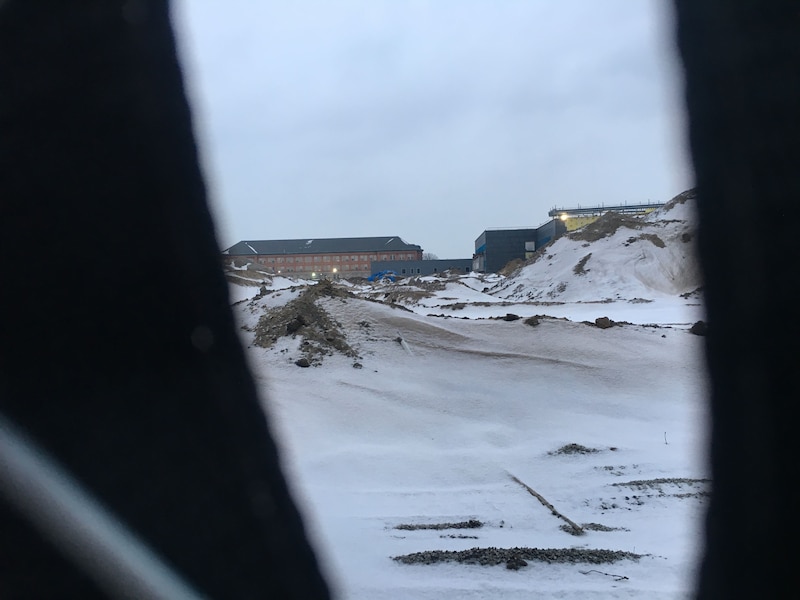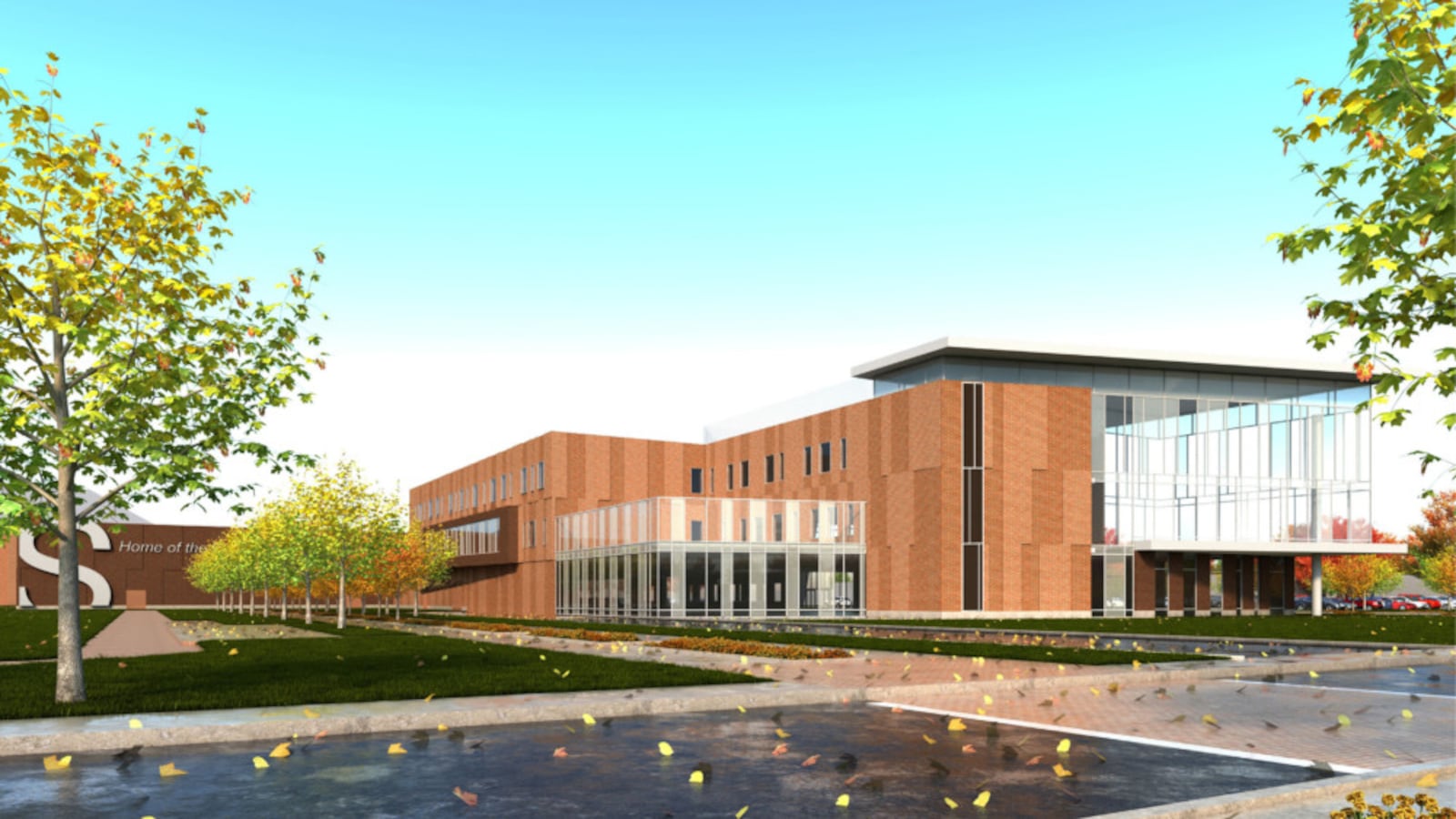On a bitterly cold winter afternoon, snow swirls around a fenced-off construction site covering a full city block in Chicago’s Englewood neighborhood. Mounds of dirt and metal are covered by snow that lays a picturesque blanket over the scene, and behind in the distance the first floors of a new structure stand tall.
By fall, the site will be the home of a $85 million state-of-the-art high school focusing on career-preparation and math, science, and engineering education built on the location of Robeson High School, which was closed over the summer.
Ashiea Smith, who grew up in the adjacent Washington Park neighborhood, is excited for the new school.
“I most definitely hope it makes good on all the promises it has made. Every time you rebuild a school, you rebuild the community, especially if [the school is] state-of-the-art,” said Smith, whose son attends nearby Johnson College Prep, part of the Noble charter network.
In a year when education has been at the forefront of the campaign for Chicago’s next mayor, the Englewood neighborhood provides an example of how decisions on schools can bring a community hope — and despair.
In Englewood, Chicago Public Schools is both building its only new high school this year and closing another neighborhood high school, just as its moratorium on school closures expires. Since 2001, at least 16 public schools have closed in Englewood while charters continue to open, some only blocks away from schools struggling with depopulation.
The foreclosure crisis that devastated South Side neighborhoods left scores of Chicago’s iconic three-flat buildings boarded up around the new high school. Englewood’s population has fallen as thousands of African-American families continued to leave Chicago in the past year.
The new high school just might turn around the neighborhood, said Asiaha Butler of the community group R.A.G.E. Englewood. Butler was among the Englewood community leaders who were chosen for the Community Action Council, a local group convened by the district to offer the neighborhood input into the new campus.
“When a community is disinvested, it trickles down from our housing to our job market to our education, and school closings have become an outcome,” Butler said. She welcomes a new investment of resources in the area.
But just blocks away from where the school is being built, another sits empty: Team Englewood Community Academy, slated to formally close soon. (The school shares a building with the charter Urban Prep Academy’s Englewood campus, which will continue to operate in the building.)
Team Englewood is just one of four high schools in Englewood being phased out.

The construction site of the new STEM high school, seen through a gap in a chain-link fence.
So far, Team Englewood has received only a quiet requiem, compared with the months of sit-ins, protests and angry community meetings that marked previous closures. Not one person showed up at the first of the three community meetings held to gather input on the closure. (The last community meeting was rescheduled because of frigid weather, for 5:00 p.m. Tuesday, Feb. 5 at CPS headquarters at 42 W. Madison.)
But former teachers and students say they still have deep feelings for the school and its community.
David Stieber started teaching social studies at Team Englewood Community Academy in 2007. He was full of hope about the project to build a community-led school in Englewood.
“We were called the founding teachers of the school and we had a lot of input about what the school should be like, from the hall pass policy to the grading and curriculum,” said Stieber, who now teaches at Kenwood Academy High School.
It was his first teaching job in Chicago Public Schools, and one of the best. But Stieber said the school felt the shadow of closings around it.
Team Englewood itself sprung from a controversial school reform policy that then-Mayor Richard Daley began in 2004 to replace poorly performing schools. Chicago Public Schools shut Englewood Academy High School for poor performance in 2003-2004 and redirected its students to Team Englewood, which opened with an accountability plan developed under Daley’s Renaissance 2010 program.
Many of Stieber’s students had attended one of the six elementary schools in Englewood that were closed or consolidated in 2013, when Chicago closed 49 schools in what was one of the biggest school closures in the United States.
“The rhetoric was that failing schools were closed, and my students felt like they were failures,” said Stieber, who left Team Englewood in 2014.
David Holmes, who graduated from Team Englewood in 2015, said the school was “not kicking high, but still kicking.” He recalls very committed teachers, but poor resources, like outdated history books. Last school year, when the school still had students, Chicago rated the school a Level 3, the lowest rating.
Now, thinking about the closure of the school where he discovered a love for poetry through after-school clubs and a passion for public speaking through debate team, Holmes said he is “devastated.”
“It sucks. It’s like, OK, I can’t even drive back in 10 or 20 years with my kids and go back,” Holmes said. “It is literally a hole along a block now.”
Twelve years since it first opened its doors, Team Englewood Community Academy is now empty. Last school year, the school, which was 98 percent African-American, had shrunk to 76 students, who either graduated or transferred to other high schools in June.
The district came under fire for not providing enough long-term support for students transferring to other schools during previous rounds of school closures, particularly the mass closure in 2013. A 2018 report from the University of Chicago Consortium on School Research found that schools taking in students received extra funds for the first year for welcoming activities, new programs and extra staff support, but they wanted more sustained resources.
This year, the district gave high schools taking in students from Team Englewood $6,100 per student in supplemental funding for academic and social supports.
Seven of Team Englewood’s students started at Kenwood Academy High School, a neighborhood high school more than 4 miles away in the Kenwood neighborhood.
The school’s principal, Karen Calloway, said she has used the transition funding to hire a full-time counselor focused on helping Team Englewood students, and any others, adjust to Kenwood. “Kenwood can be overwhelming, especially if they are coming from a smaller setting,” Calloway said.
Of the seven students, two have taken college tours that Kenwood offers, and some are involved in the school’s mentoring programs. “We try to really do a good job at really supporting our students. I’m happy they selected Kenwood,” Calloway said.
Students in the area will also have the option of attending the new STEM high school, still under construction, when it opens in the fall.
Butler, from R.A.G.E. Englewood, hopes the new high school serves young people from the neighborhood.
“My hope is that Englewood students have an opportunity to be in a beautiful new facility, with the resources that are equivalent to the resources on the North Side,” Butler said, “and the education and curriculum that would be comparable to an all-white neighborhood.”

